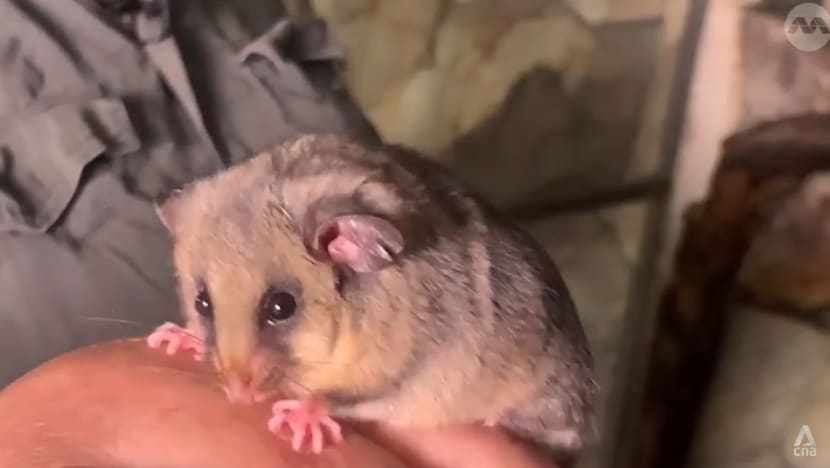Fossils formed millions of years ago could give clues on how to conserve Australia’s endangered animals
One animal that may be saved from its critically endangered status is the mountain-pygmy possum.

There are fewer than 2,000 endangered mountain pygmy-possums left in the wild.
BLUE MOUNTAINS, Australia: Fossils formed more than 20 million years ago are helping to save some of Australia’s endangered species from the effects of climate change.
In what has become known as paleoconservation, scientists have discovered that the distant past could provide important clues for the long-term survival of animals on the brink of extinction.
Award-winning paleontologist Mike Archer describes the field as reading a book back through time.
“As you come up through the rock records, the rocks get younger and younger, and all of these contain huge numbers of fossils so we can chart how animals have been changing through time, how they’ve adapted to climate change,” said Prof Archer from the School of Biological, Earth and Environmental Sciences at the University of New South Wales in Sydney.
He added that fossil records help in the understanding of why animals today behave the way they do. There is also a broader realisation that these animals have the capacity to adapt to a much wider range of habitats than we see them in today, said Prof Archer.
SAVING MOUNTAIN-PYGMY POSSUMS
From his laboratory, Prof Archer is helping to forge a better understanding of how wildlife existed millions of years ago.
Thanks to his work on the Riversleigh area of far north Queensland, it was discovered that 20 million or more years ago, a critically endangered Australian marsupial lived in temperate rainforest much further north.
According to the Australian Conservation Foundation, mountain pygmy-possums were thought to be extinct until they were rediscovered at Mt Hotham, which is nestled amongst the Victorian Alps, in the 1960s.
Today, these mountain pygmy-possums live in alpine areas, which they had to adapt to due to climate change. The possum is Australia’s only hibernating marsupial and hibernates for up to seven months under the snow.
The foundation added that there are fewer than 2,000 endangered mountain pygmy-possums left in the wild. It said that they continue to be under pressure from threats including lack of food as Bogong moth numbers decline, climate change as their habitat warms, and the development of ski resorts.
IMPLICATIONS FOR THE FUTURE
Armed with clues from their past, conservationist Trevor Evans is reintroducing the possums to cool, lowland rainforest environments at a newly-built breeding facility at his Secret Creek Sanctuary in Lithgow, Blue Mountains.
The animal is usually found in the Snowy Mountains where the weather is much harsher than in Lithgow.
“We’re at 1,000m here. They normally only range down to about 1,400m in the Snowy Mountains but now with climate change this is a species we could lose,” he told CNA.
Mr Evans is currently trying to get the mountain pygmy possum’s diet right.
“We could have animals return to the wild in the next five years. But these animals here are bred in captivity. They will stay in captivity. The ones that go back to the wild will be from wild stock,” he said.
“So we are making sure we have all the things in place for these little guys to be successful in their breeding. This is an insurance population for the species, for the planet.”
If the operation is successful, many other species threatened with extinction could also be saved.

















